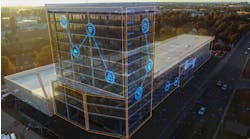While your building may be able to support a green roof, your staff must be ready to keep it alive. There are a variety of strategies that you should employ to give your facilities team a green thumbs up.
“The most concerning and damaging error regarding green roof maintenance is not having a plan in place,” says Andy Creath, owner and founder of Green Roofs of Colorado, a firm that designs, installs, maintains, and consults on green roofs. “No one visits them and they wonder why it’s not alive months later. You need to get eyes up there.”
Develop a Plan of Attack
The most important reasons for formulating a maintenance plan entail complying with building codes, insurance requirements, city standards, and manufacturer warranties.
“For example, green roof designs must be accompanied by a maintenance plan in order to be permitted by the city of Toronto,” explains Jordan Richie, director of education and accreditation with Green Roofs for Healthy Cities, a nonprofit industry association. “The stormwater guideline from the District Department of the Environment (DDOE) in Washington, D.C., requires inspection twice a year.”
Many green roof system manufacturers won’t supply a system without a maintenance plan in place from the onset, he adds.
Proper maintenance protects your investment and ensures your system achieves its original intent, whether that’s for thermal performance, stormwater management, or aesthetic value.
Write a maintenance plan and familiarize the FM team with it. It should include a site map, green roof type, planting schedule, and irrigation controls. Inspections should address overall plant health, moisture levels, and drainage pathways.
“After the green roof is first installed, you need to check plantings every week or two,” Creath advises. “Once you’re past the establishment phase, you’re probably looking at quarterly visits. But it needs 10-12 visits during that first year.”
Implement Irrigation
Although green roofs can typically absorb the first inch of stormwater, they still need a near constant source of irrigation. The three main types include hand watering, overhead spray, and drip irrigation that comes from underneath the plants and media (soil).
“Drip is the most efficient because the sun and wind can prevent sprayed water from reaching the plants. However, as far as cooling plants down, overhead is more effective,” Creath explains. “Most of the time we recommend a combination of all three.”
The level of irrigation depends on your green roof type. “The types that are more like gardens require additional watering, mowing, and trimming,” Creath says. “But wild species don’t need to be manicured as much.”
Having access to water with adequate volume and pressure is important, Richie adds. When a hose has to be run 20 or more feet, it will lose pressure. “You need to know where the drain pipes, valves, and spigot are,” he says.
Weed Out Invasive Species
Weeds are not only unsightly and annoying, but also can pose a serious threat to your overall system. “Particularly, invasive woody species can harm underlying components like the waterproofing membrane,” Richie explains.
Your team should be aware of which plants are parts of the original design.
“It’s helpful to have a picture of common weed species so staffers know exactly what they’re looking for,” suggests Creath. “Hanging this near the roof entryway is a good idea.”
The depth of your green roof, ranging from 4 inches to 1 foot, also impacts the presence of weeds.
“More soil means more plants are able to grow there,” Creath explains. “Very few plants thrive in a shallow roof, so you’re less likely to have a weed problem there.”
At present, no herbicides or insecticides are labeled safe for green roof use because they could hasten the degradation of the underlying membrane, Richie says.
“If you find yourself thinking you need an herbicide, it indicates that weeding is not being done frequently enough,” adds Creath. “You may need to get more bodies up there.”
After weeding, be sure to clear the dead plant material from the roof so that new weed seeds don’t manifest themselves.
Document Your Actions
After each roof visit, you should record what it entailed – whether tests on the soil were performed or any products were applied. Log comments on the overall health of the system. Note the date, time, and duration of the visit, as well as recent weather conditions.
“A camera is my best friend on a green roof,” Creath suggests. “It allows you to document what’s going on and provide information for future reference.”
Keeping track of the maintenance performed is just another way of protecting your investment and ensuring your green roof will sprout into the future.
“It’s a living entity,” says Creath. “It needs attention and care.”
Chris Curtland [email protected] is assistant editor of BUILDINGS.


